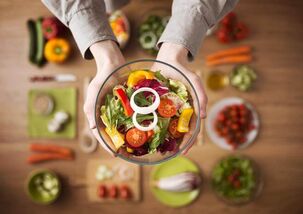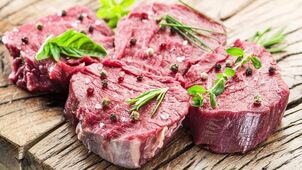Japanese cinema and animation amaze with their authentic atmosphere, fantastic images, incredible beauty and slenderness of Japanese women. The Japanese are recognized as the thinnest people in the world. The secret is not only in the lean national feature, but also in the moderation of portions and healthy eating. The very name "Japanese diet" is intriguing. What does it take to become a fragile geisha? Let's find out!
The reason it is called the Japanese diet is probably not clear, but the results of the approach are impressive - in two weeks you can lose 4-8 kg, depending on the initial weight. One source says the approach was developed at a clinic in Tokyo, and another - the transparency of rules and diets dictates a clear path to achieve this goal. Those who try will be rewarded - reminiscent of the path of the samurai.
The Japanese 14-day diet (original version) is known all over the world, and its list of products is accessible and moderate. Japanese nutritionist Naomi Moriyama claims that low-carb foods and moderate portions help maintain youth and longevity.

According to Moriyama's research statistics, Japanese people consume 25% fewer calories than other nations. Fatty foods, fats and the use of oil on an industrial scale are not popular in the country. Healthy food and small portions are a hallmark of Japanese culture.
This principle corresponds to the menu of the Japanese diet for 7 days or for 2 weeks, despite the differences in the ingredients with the diet of the inhabitants of the country of the rising sun.
In this article we will analyze:
- principles that the Japanese diet for weight loss dictates;
- the pros and cons of the approach;
- , which are not suitable for Japanese diets for weight loss for health reasons;
- main menu for 7 and 14 days;
- whether to stick to.
Samurai rules for the Japanese diet
For the 7, 13, 14 day Japanese diet to be effective, you must adhere to the following rules:
- preliminary preparation - a week before the start, give up fast food, fatty products, pastries, salty dishes;
- complete elimination of salt, sugar, spices, sauces from the diet;
- chew food thoroughly for satiety;
- pre-compiled menu for the Japanese diet is strictly observed during the selected period (7, 13, 14 days);
- is forbidden to change the sequence by days of food;
- after waking up drink a glass of warm water;
- coffee can be replaced with green tea;
- Observance of the drinking regime - at least 2 liters of still water. The breakdown products of animal proteins are excreted and fill the stomach, dulling hunger;
- the replacement of ingredients or the addition of unauthorized products is prohibited;
- frequency of application of the method - 2-3 times a year. The reason is a high level of stress for the body;
- the diet should be smooth so that lost body fat does not return;
- The Japanese diet for weight loss uses protein foods as the main source. A small amount of carbohydrates in the form of crackers and fiber and fat from unrefined oils used as a dressing for salads, meat and fish.

The strict Japanese diet contains all the macronutrients in your diet, albeit with a warning. In this regard, the method cannot be characterized as balanced, which is why the Japanese diet is followed for 7 to 14 days so as not to harm health.
Even after two weeks, a protein diet can reduce vitality, cause apathy and headaches due to the low amount of carbohydrates in the diet. At the first signs of serious illness, it is recommended to consume complex carbohydrates or to abandon the diet completely.
Features of the strict Japanese diet for weight loss
The first association with the name "Japanese diet" - for 14 days the menu turns into eating sushi, rice and curry for breakfast, lunch and dinner every day, but in limited portions. In fact, several features of the approach stand out:
- small portions;
- the amount of calorie intake - 800 kcal;
- meals are strictly 3 times a day, without snacks;
- 14 days - maximum period;
- off salt.
The essence of dietary nutrition

The basic rule is that the Japanese thirteen-day diet limits the intake of any sugar, salt and carbohydrates. In 7. 13 or 14 days you can lose up to 8 kg of excess weight. Lack of macro and micronutrients can provoke serious disturbances in the body, so it is highly undesirable to stick to the approach for longer.
There is a 13-day Japanese diet without salt, because Orientals believe that their number is lucky. In Europe, however, the figure is perceived differently, so due to suspicion and convenience, weight loss lasts 7 or 14 days.
Contraindications
The Japanese diet for a week or two is considered solid and has a number of contraindications:
- for hypertension, heart disease, blood vessels;
- diabetes mellitus;
- thyroid disorders;
- during pregnancy and lactation;
- gastrointestinal diseases of any complexity, kidney disease;
- in sports;
- hard physical and mental work.
When it comes to quickly getting rid of weight gained during a feast, it is recommended to give preference to fasting days - this practice will not harm health, facilitate digestion and get rid of water collected during the celebrations.
Pros
The Japanese diet without salt for 7 and 14 days is gaining popularity at the moment. What attracts the method:
- the effectiveness of weekly weight loss;
- removing water from the body;
- Easy diet and affordable ingredients.
The early results of the Japanese diet are impressive. At this time, maximum weight loss occurs due to the discharge of "ballast" from the water due to the exclusion of salt and the minimum consumption of carbohydrates. During the second week, the weight does not disappear as actively as there is no excess water left. Little energy comes from food, so the body is forced to break down its own fat.
However, along with fat, muscle tissue is broken down. With long-term maintenance, in addition to deteriorating health, the quality of the body will be poor. It is worth considering whether it is worth it.
cons

The Japanese diet low in carbohydrates and without salt does not disappear without consequences. Disadvantages of the method:
- excessive calorie deficit (800 kcal) slows down metabolism;
- chronic diseases are exacerbated;
- restriction of micro and macro elements disrupts the proper functioning of the body;
- high level of stress for functional systems;
- coffee instead of breakfast loads the work of the heart and blood vessels;
- the meager and limited menu exerts psychological pressure, which is fraught with damage;
- a systematic feeling of hunger that reduces concentration;
- high fatigue, irritability, apathy, reduced efficiency, dizziness;
- The abrupt return to the usual diet returns the lost weight with weight gain.
Recommended and prohibited products
As romantic as the name of the weight loss method sounds, there will be no exoticism. The foods that are included in the Japanese salt-free diet are familiar to Europeans. The ingredients are available in the supermarket or delicacies and are affordable.
Meat and fish dishes with vegetables as a side dish are common. But the exclusion of salt and spices, bread, cereals and pasta becomes a psychological test.
List of allowed foods for compiling menus:

- protein - sea fish, beef, beef, beef fillet, eggs, low-fat hard cheese;
- drinks - water, natural coffee, green tea, homemade tomato juice without salt, kefir 0, 1-1%;
- dark bread croutons;
- fiber (vegetables) - carrots, cabbage, zucchini, eggplant, parsnip root;
- fats - unrefined oils (olive, vegetable);
- fruits - green apples and pears, citrus fruits.
Non-listed nutrients remain banned.
Menu for 7 days
In the menu of the Japanese diet for 14 days, a limited set of foods, a table with a specific diet will help you clearly check this.
Days / Eating |
Breakfast |
Lunch |
Dinner |
Monday |
Cafe |
2 eggs, a glass of tomato juice, cabbage salad with butter |
200 g sea fish |
Tuesday |
Coffee, dark bread croutons |
200 g fish, cabbage salad with butter |
100 g beef, a glass of kefir |
Wednesday |
Cafe |
1 egg, salad of 3 large boiled carrots with butter |
2 apples |
Thursday |
Cafe |
Zucchini or parsnip root, 1-2 apples |
100 g beef, cabbage salad, 2 eggs |
Friday |
1 boiled or raw carrot with lemon juice |
500 g sea fish, a glass of tomato juice |
2 apples |
Saturday |
Cafe |
500 g chicken breast, cabbage salad with carrots (or one ingredient) |
2 eggs, carrots with butter |
Sunday |
Cafe |
100 g beef, 2 apples or pears |
Any changes from previous days except apples |
Method of food preparation: steamed, boiled, baked. Baking is off.
Japanese diet for 14 days: the basics in brief

If the first week is given without breakdowns and the state of health allows you to continue, in the second week the menu of the first seven days is repeated or the menu is made a little more varied.
Menu for 14 days
It is forbidden to rearrange meals or days.
1 day |
Breakfast: coffee without milk and sugar / cup of green tea Lunch: stewed cabbage with a little olive oil, tomato juice, 2 hard-boiled eggs Dinner: 200 g boiled fish |
Day 2 |
Breakfast: A small piece of rye crouton, coffee or green tea Lunch: 200 g boiled fish, cabbage salad with butter Dinner: 100 g boiled beef, 1 cup kefir 0, 1-1% |
Day 3 |
Breakfast: A small piece of rye crouton, coffee or green tea Lunch: zucchini or eggplant fried in vegetable oil (unlimited amount) Dinner: 200 g boiled beef, white cabbage with a little butter, 2 boiled eggs |
Day 4 |
Breakfast: grated carrots with lemon juice Lunch: 200 g boiled fish, a glass of tomato juice Dinner: 200 g apples |
Day 5 |
Breakfast: grated carrots with lemon juice Lunch:200 g boiled fish, a glass of tomato juice Dinner:200 g grapefruit |
6 den |
Breakfast:coffee or green tea Lunch:boiled chicken fillet, cabbage and carrot salad with vegetable oil Dinner:2 hard-boiled eggs, small fresh carrots |
7 days |
Breakfast:coffee or green tea Lunch:200 g boiled beef Dinner:200 g pears or 200 g boiled fish / b2 boiled eggs with small fresh carrots / 200 g boiled beef and 1 cup low-fat kefir |
Day 8 |
Breakfast:coffee or green tea Lunch:boiled chicken fillet, fresh cabbage and carrot salad with vegetable oil Dinner:2 hard-boiled eggs, small carrots |
Day 9 |
Breakfast: grated carrots with lemon juice Lunch: 200 g boiled fish, a glass of tomato juice Dinner:200 g apples |
Day 10 |
Breakfast:coffee or green tea Lunch:1 hard-boiled egg, 3 small carrots, 50 g cheese Dinner:200 g oranges |
11 den |
Breakfast: a small piece of rye crouton, coffee or green tea Lunch:zucchini or eggplant fried in vegetable oil Dinner:200 g boiled beef, 2 hard-boiled eggs, fresh cabbage salad with vegetable oil |
Day 12 |
Breakfast: a small piece of rye crouton, coffee or green tea Lunch:200 g boiled fish, fresh cabbage salad with butter Dinner: 100 g boiled beef, 1 cup kefir 0, 1-1% |
Day 13 |
Breakfast: coffee or green tea Lunch:2 hard-boiled eggs, boiled cabbage with vegetable oil, a glass of tomato juice Dinner:200 g fish, boiled or fried in vegetable oil |
Day 14 |
Breakfast:coffee or green tea Lunch:200 g boiled or fried fish, fresh cabbage salad with butter Dinner: 100 g boiled beef, 1 cup kefir 0, 1-1% |
14-day shopping list for Japanese diets
For convenience, below is a list of the two-week food basket:

- coffee (ground or beans) - 1 package;
- green tea (without flavors, additives) - 1 package;
- chicken eggs - 2 dozen;
- sea fish fillet - 2 kg;
- lean beef - 1 kg;
- chicken fillet - 1 kg;
- unrefined vegetable oil - 500 ml;
- white cabbage - 2 forks;
- carrots - 3 kg;
- zucchini, eggplant - 1 kg;
- apples, pears, citrus fruits - 2 kg;
- tomato juice - 1 liter;
- kefir 0, 1-1% - 1 l;
- lemons - 2 pcs. ;
- rye bread - 1 loaf (dry in the oven).
Japanese diet for a month
Do not practice for more than 14 days due to the monotonous diet and low calorie content. At least in your right mind.
Preparatory phase and exit
The duration of the preparation phase is one week. The use of salt is minimized, pastries, flour, pickles, canned food, fruits and berries, dairy products are excluded.
The day before the start is a hungry day of a product - this will allow the body to adapt to small portions and calories. Warm water will help satisfy hunger, and careful chewing will help you feel full.
If you suddenly return to your usual diet, it will provoke a stressful state of the body, overload the digestive tract and restore lost weight. Therefore, the outcome of the Japanese diet is organized in accordance with the principles of proper nutrition. Indicative menu:

- Breakfast: liquid oatmeal in water with a spoonful of honey, coffee without sugar;
- Snack: a handful of dried fruits and nuts;
- Lunch: boiled beef with brown rice, fresh vegetables;
- Afternoon snack: low-fat cottage cheese with berries;
- Dinner: vegetable salad with sour cream, roasted fish.
The menu should be maintained for several days, increasing the portion size daily to the required daily calorie intake.
Why you shouldn't choose a Japanese diet
The Japanese diet does not form a healthy eating habit due to its short duration, which is fraught with decay. Lack of healthy eating rules leads to breakdowns. If you do not follow the previous menu to get out of the Japanese diet, then the lost weight will return with an increase, time and health will be lost.
The best solution is to choose a technique that will teach you how to eat right and become a lifestyle. This can be a paleo diet or simply creating a deficit in daily calorie intake by increasing the amount of protein foods.
The weight loss format is everyone's personal choice. But before you do, you need to think not only about the realism and achievability of the goals, to assess the possibilities and weigh all the pros and cons. Remember that health is given for life.
Learn more about the Japanese diet
To understand the basic rules of such a diet, you need to understand the Japanese themselves. What do we know about their nation? They are characterized by solidity and a casual approach to any business. And food is no exception. The Japanese diet has no clear boundaries. It can last from 13 days to 13 weeks.
Someone may find this diet boring, hungry. In fact, her menu is quite satisfying and varied. As we said, it must be at least 13 days old. And most importantly, as with any diet for weight loss, is the smooth transition from ordinary food to diet and vice versa.
The basic principles of the Japanese diet are to speed up and optimize the body's metabolism. All components of the diet are selected very carefully and you should not replace the product with another, even if your replacement seems equal. We also do not recommend changing the sequence of days.
Eat a snack on the eve of your diet. You can eat with chopsticks during your diet. Immerse yourself in the atmosphere of the Far East and the diet will not look as annoying and boring as the rest!
Diet menu
The Japanese diet is based on the intake of protein foods for weight loss and a limited intake of carbohydrates and fats, quite strict and strict. The menu includes fish, meat, eggs, juices, vegetables, as well as boiled and mineral water
Like any diet, the Japanese diet has its drawbacks. It is not rich in trace elements and vitamins, it provides for the use of black coffee, so if you are contraindicated, visit your doctor, maybe he will replace it with black or green tea. You cannot use salt, sugar, flour, alcohol.
Conclusions
You've probably noticed that the Japanese are often healthy people known for their longevity. Have you met overweight people in Japan? Rarely. In Japan, it is common to eat lower-calorie foods than in other parts of the world. People in our regions can also try to lose weight with the Japanese diet, which is considered very effective and very popular.
Reviews
Opinions about the Japanese diet are quite diverse. Some say it's a really working diet with amazing results, while others accuse it of being too raw. Negative reviews from doctors are based on the fact that the Japanese diet is a heavy burden on the kidneys due to the consumption of protein in large quantities.
Anyway, on the way to a perfect body, be careful with any popular diets. Before you start losing weight and changing your diet, be sure to consult a specialist, because your main goal is to become the best, not to go to the hospital.






























